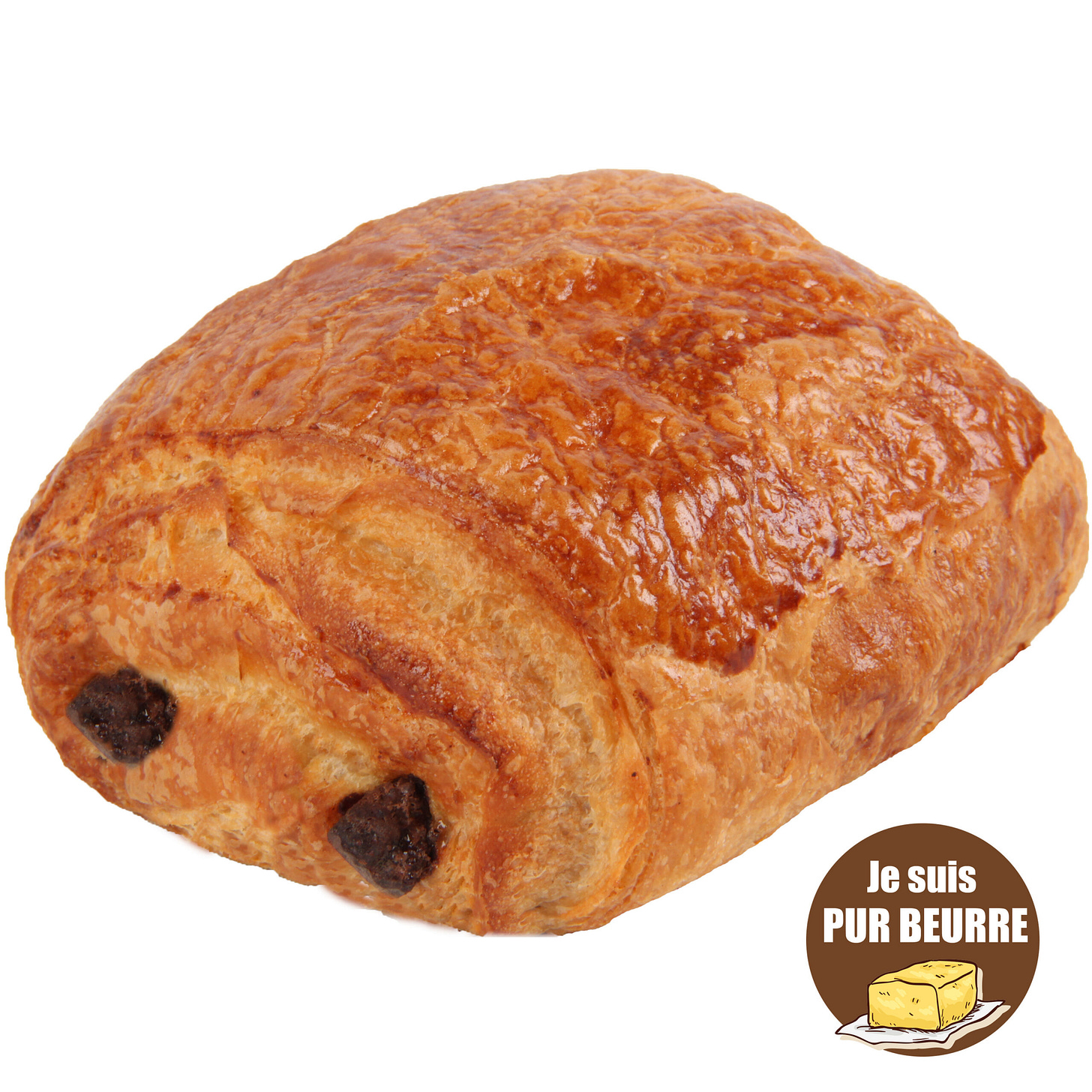A pain au chocolat…or, if you prefer, a chocolatine.
Earlier this week, looking for a comparison with the impasse presently paralysing the French government, one commentator found a metaphor in food. “Imagine,” she said, “trying to get an agreement between people who say ‘pain au chocolat’ and those who say ‘chocolatine.’ ”
Wikipedia defines this contentious creation as “a cuboid-shaped piece of yeast-leavened laminated dough, similar in texture to a puff pastry, with one or two pieces of dark chocolate in the center.” Most of France calls them pain au chocolat but in the south-west they prefer chocolatine, and get testy if you say otherwise. Ask for a pain au chocolat in patisseries down there and they sell you a chocolatine, but charge extra.
The son of a pastrycook should have known about French baked goods. But my father learned from the British model, duplicating the cupcakes, scones and tarts served in every English village tea shop. Nobody in France had even heard of the Fat Rascal or an Eccles Cake, let along that pearl of Australian pastry, the Lamington, a cube of stale cake dunked in chocolate syrup, then rolled in desiccated coconut.
My education began in the summer of 1970, improbably in a campsite on the border where France, Switzerland and Germany converge.
Back then, most Australians visiting Europe bought a second-hand VW Kombi van and hit the road. Not so ambitious, my friend and I bought a VW Beetle and a tent, and set off in the general direction of Venice. We soon learned that campsites came in all shapes and varying amenities. This one, designed and maintained with German efficiency, was laid out on lawns beside a canal. Even more agreeably, a small van drove up each morning, loaded with fresh bread and pastries.
I recognised croissants, though I’d never actually eaten one, but was puzzled by other items, in particular some plump brown rolls. What did I expect to find inside? My best guess was cheese. So discovering those veins of dark chocolate was as potent as Proust’s encounter with the madeleine. Bread and chocolate! Who but the French would have thought of that?
Soon, I couldn’t pass a pastry shop without browsing. I discovered the croissant aux amande, fat with almond paste and garnished with flaked almonds - I defy anyone to finish one at a sitting- and gaufres – waffles – which came dusted with icing sugar and oozing Nutella, the chocolate and hazelnut spread that’s Europe’s answer to peanut butter.
And then there’s choux pastry. An invention of the great Carême, patissier to Napoleon 1, Britain’s Prince Regent and the Russian Tsar, it uses flour, butter, eggs and water but no yeast, no baking powder. Instead, heat vaporizes the water, inflating the dough into a crisp, almost weightless shell.
Choux is its own world. A frosted and cream-filled tube is an éclair – a lightning flash – because that’s how quickly one eats it. Mix the dough with cheese and you have a goujon. Fill a shell with chantilly, chocolate sauce or ice cream, it’s a profiterole. After that, the only limit is one’s imagination. To celebrate a bike race from Paris to Brest, France’s furthest western point, one chef made a wheel of choux, sliced it across and filled it with praline cream to create le Paris-Brest.
The Paris-Brest.
Another perched a small puff on top of a larger one, added caramel frosting and, since the result resembled a nun in her brown habit, called them religieuses - nuns. Whereupon a competitor filled a single sphere with cream and called it a pette de nonne – a nun’s fart. Many countries make great pastry, but to be funny at the same time? Only in France.






See also ‘suisse’ and ‘feuillette’! Lovely piece, John.
Hahaha, in Spain they are called napolitanas, they are so good but never as good as in France